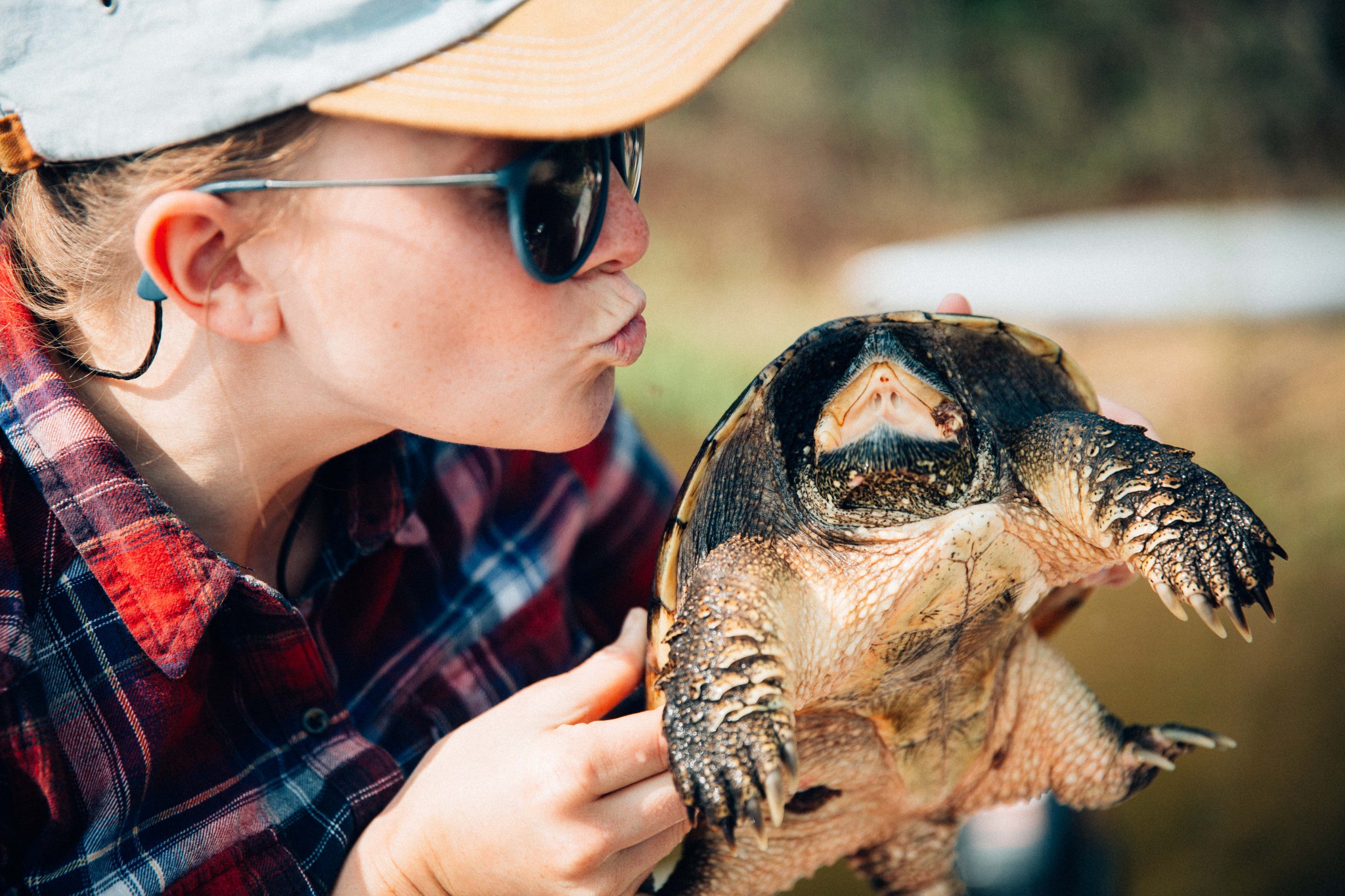Photography May 30, 2016
A Lesson from a Snapping Turtle
By Marcus Threndyle, Education and Outreach Assistant
Snapping turtles are not uncommon, and most of us here in Canada have encountered one at some point in our lives: at the cottage, strolling through an urban park, on a camping trip, or after an awry second shot found the pond by the 10th green.
They’re certainly impressive creatures, and can even be daunting. The shell of a full grown turtle can reach 40 cm in length (referred to as “carapace length”). Tag on a neck, tail and four clawed feet, and these turtles can reach almost a metre in length and weigh up to 18 kg. Beyond their imposing size, full grown snapping turtles can appear highly distinguished, as there is a good chance that they are older than you. Researchers estimate that the oldest snapping turtles on the planet today have passed the century mark. A species this experienced has much to offer, and many lessons to teach us—whether we want to learn them or not.
Life at IISD Experimental Lakes Area (IISD-ELA) is steeped in learning. Indeed, that is a pivotal goal of our scientific research—to learn things yet unknown. And our researchers don’t just work with freshwater; they also go to great lengths to glean important new lessons from animals. We learn from the fish populations that we monitor, and invertebrates that we collect and analyze. It’s crucial that we then share these lessons, so that others may better inform their own lives and behaviour. This week, we’d like to share a lesson we learned from a snapping turtle.
Interactions with snapping turtles are common and eclectic for field researchers at IISD-ELA. They frequent our roads and trails, and regularly find their way into the trap nets that we use to sample fish passively. Our interest is always in politely moving the turtle free from our nets or path, so that they may go on their way and we on ours. However, this requires touching the turtle, an interaction occasionally complicated by their ferocity. Perhaps we catch it on a bad day, perhaps it is growing crotchety with age, but some turtles simply don’t like being touched, and are rather adept at communicating this. They hiss (it sounds a bit like a cobra). They musk (it smells a bit like the bottom of the lake). And, true to their name, they snap.
Snapping turtles have another name, bestowed by the French. This week we learned that their French name is equally as important for conveying their abilities. While early English biologists named them for their jaw action, French biologists opted for “tortue serpentine.” As it turns out, tortues serpentines have a neck that can extend surprisingly far. Certainly much farther than it appears, as their prey learn the hard way. Almost all the way around to the back of their shell, as the fingers of those who attempt to move them can attest.
And at least far enough to reach the nose of an innocent researcher, as they taught us this week…
Photo by Jay Siemens (www.jaysiemens.com)
